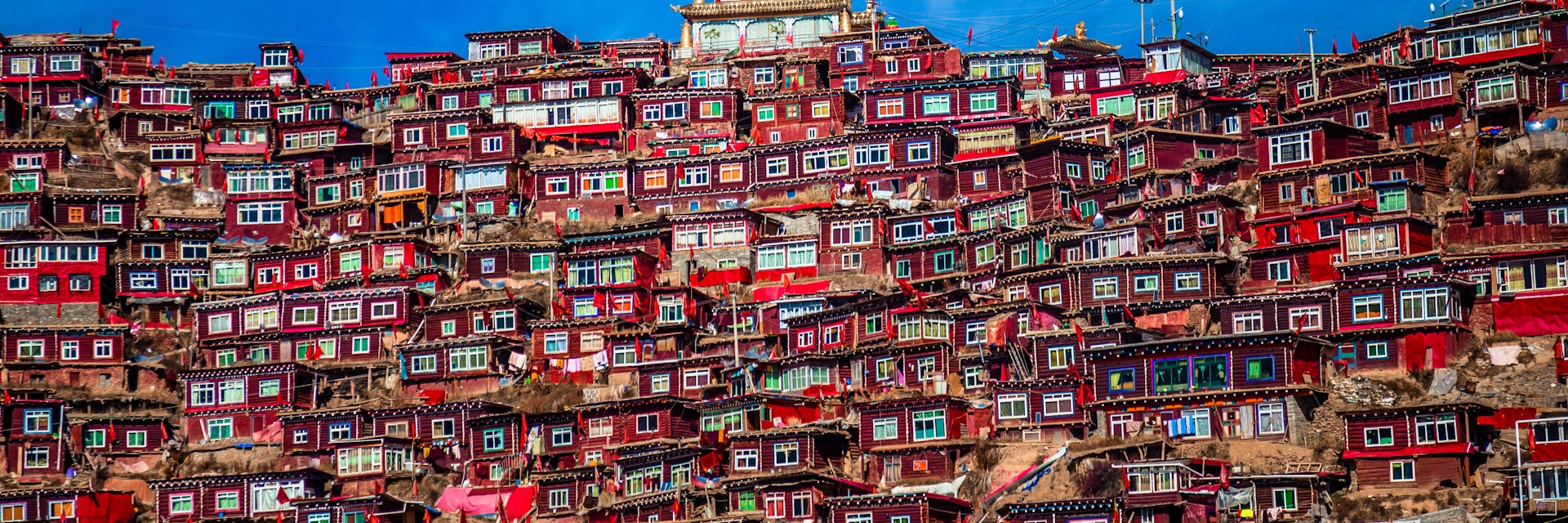Of all the Buddhist sights in western Sichuan, there is none as striking as Larung Gar. The future of Tibetan Buddhism is contained here in this school, one of the largest of its kind in the world, cradled in a valley some 170km northeast of Ganzi.
Larung Gar was founded in 1980 by 30 disciples gathering at the modest home of their charismatic leader Khenpo Jikphun. Many more soon arrived. Today the two main halls that anchor the valley floor – the nunnery (女金室; nǚjīn shì), distinguished with three darchen (flag poles) in front, and the massive main monastery (大金室; dàjīn shì) – are thoroughly surrounded by a hive of subsidiary chapels and low-slung living quarters that blanket the valley in crimson. Devoted pilgrims climb to the ridge to prostrate before a huge chörten (Tibetan stupa) and walk the kora spinning prayer wheels.
Most of the classes in Buddhist philosophy, history and discourse are taught in Tibetan, even though the students are a mix of Tibetan, Han and other minorities from across China.
Up until 2016 there were 10,000 students studying here, but in July of that year Chinese authorities began to demolish hundreds of residences. When the demolitions started the town was closed to all foreigners (and it remains closed today) and information on what has been taking place at Larung Gar has been hard to verify. The authorities have said that the aim of the demolitions has been to make the site fire- and earthquake proof and to increase access for Chinese tourists. Tibetan rights groups say that residents have been forcibly removed from Larung Gar.
In July 2019 rumours were swirling that Larung Gar might be about to reopen to foreign tourists. Ask with Tibetan specialist tour companies for the latest.
